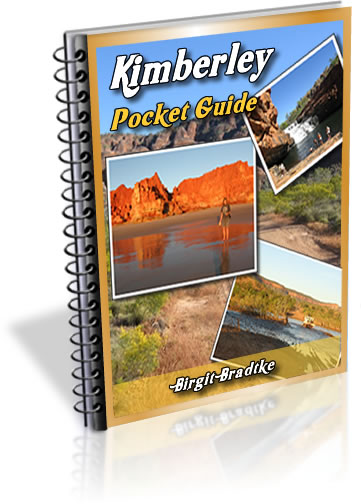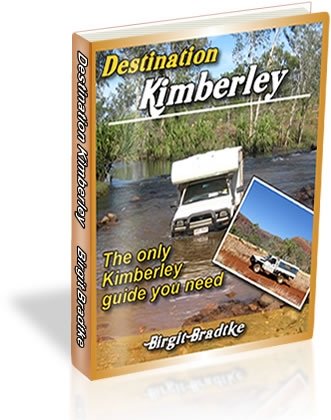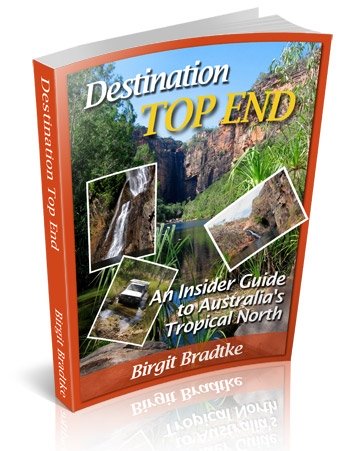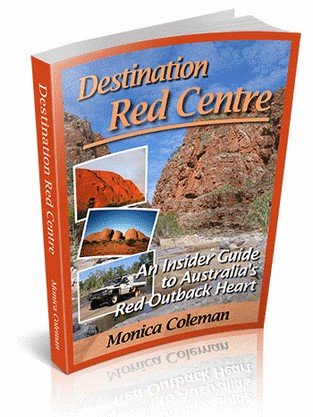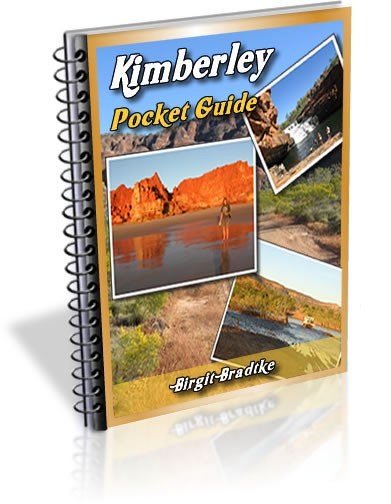The Mitchell River National Park
The Mitchell Plateau lies in the far north of the Kimberley.
To visit the Mitchell River National Park you need to set a few days aside.
Unless you are content with a scenic flight over the area, the park can only be accessed by 4WD. And it's quite a drive to get there...
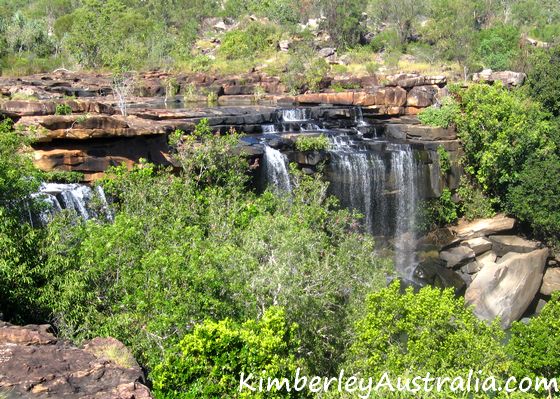 Not the Michell Falls :)
Not the Michell Falls :)
However, it's definitely worth it!
And not just to see the famous Mitchell Falls. (You could always get a helicopter to take you there.) No, the whole Mitchell Plateau is worth exploring. Take the time, do the track, rough it at the campsite, and do the full length hike. This trip is a real adventure!
About The Mitchell River National Park
The 115,300 hectare park hasn't been a national park for all that long. Between 1965 and 1985 mining was the main activity in the area, and there were many exploration, evaluation and processing camps, trying to figure out how lucrative the bauxite deposits here might be.
Thank god mining turned out to be not viable at all, but the decision
to manage the area for recreation and conservation purposes wasn't made
until 1998. In 2000 the Mitchell Plateau was finally made a national park. Phew.
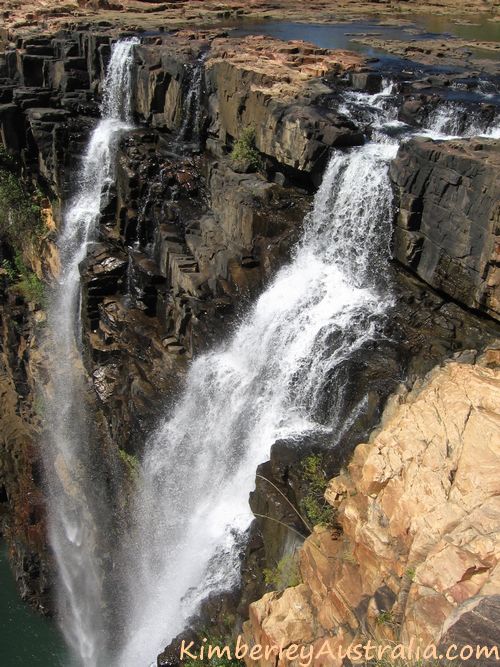 One of many impressive waterfalls in Mitchell River National Park
One of many impressive waterfalls in Mitchell River National Park
The Mitchell Plateau is of immense cultural and biological significance.
The area is rich in the well known Wandjina and Bradshaw art. The quality of the art sites here is amazing. (Sorry, it is not allowed to publish photographs of the paintings.)
The Mitchell River National Park is very important culturally and spiritually to the Wunambal people, who have lived here for thousands of years. While visitors are welcome you are also asked to show respect, approach the area quietly and to stop for a moment to think about where you are.
(There is a lot of information material available at the campground which will tell you more about the Wunambal and their relation to this country.)
The biological significance of the Mitchell River National Park is due to the variety of unique habitats these highlands provide, and the resulting rich diversity of flora and wildlife.
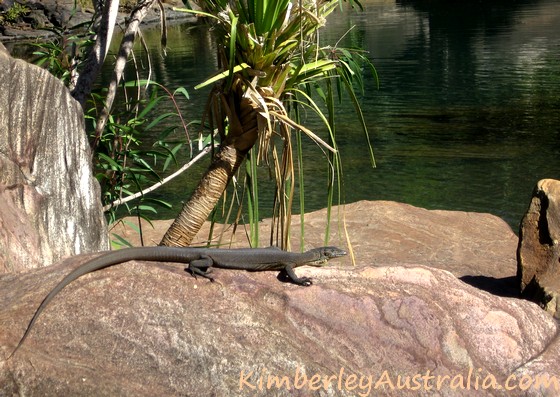 This water monitor was having a swim with us at Mitchell River National Park.
This water monitor was having a swim with us at Mitchell River National Park.
The landscapes around the plateau feature mangroves and swamps, the
margins are protected from fire and have allowed small patches of
rainforest to grow.
There are woodlands, escarpments and deep gorges, pandanus lined creeks and lily ponds...
But the most conspicuous feature are the Livistona palms. Those fan palms can be found throughout the Kimberley along streams and waterfalls, but here on the Mitchell Plateau they totally dominate the landscape. They can grow up to 18 metres tall and some of these trees are thought to be up to 300 years old!
(Again, the information materials and leaflets at the campsite are really excellent and have a lot of information and comprehensive species lists.)
Next page: How to get to the Mitchell Plateau
Mitchell Falls main page.
Mitchell River National Park (official DPaW website)
Travelling to the Kimberley?
The FREE Kimberley Pocket Guide
A great introduction to travel in the Kimberley region and along the Gibb. This free resource will answer all the questions you might have in the early stages of planning a trip.
Destination Kimberley
The full Kimberley travel guide shows you how to make the most of your adventure at Australia's last frontier. Destination Kimberley includes the most detailed and most current guide to the Gibb River Road available anywhere. Also called "The Bible" by its readers.
Travelling to the Northern Territory?
Destination Top End offers the same comprehensive, detailed insider information for the tropical regions of the Northern Territory. Be the best informed traveller in the Kakadu, Litchfield and Katherine Gorge national parks and beyond!
A must have if you travel to or from Darwin.
NEW! Destination Red Centre is the latest addition in this popular series. Monica Coleman takes you through Australia's red Outback heart, offering all the detail and insider tips that you have come to know and love about our guides. With special emphasis on Aboriginal communities and culture.
A must have if you travel to or from Alice Springs/Uluru.
Next page: How to get to the Mitchell Plateau
Mitchell Falls main page.
